Abstract
The potential of measurements of chlorophyll fluorescence in vivo to detect cellular responses to salinity and degrees of salt stress in leaves was investigated for three crop plants. Sugar beet (Beta vulgaris L.) (salt tolerant), sunflower (Helianthus annuus L.) (moderately salt tolerant), and bean (Phaseolus Vulgaris L. cv Canadian Wonder) (salt intolerant) were grown in pots and watered with mineral nutrient solution containing 100 millimolar NaCl. The fast rise in variable chlorophyll fluorescence yield that is correlated with photoreduction of photosystem II acceptors increased in leaves of sugar beet plants treated with salt suggesting stimulation of photosystem II activity relative to photosystem I. In sunflower, this fast rise was depressed by approximately 25% and the subsequent slow rate of quenching of the chlorophyll fluorescence was stimulated. These differences were more marked in the older mature leaves indicating an increasing gradient of salt response down the plant. The salt effect in vivo was reversible since chloroplasts isolated from mature leaves of salt-treated and control sunflower plants gave similar photosystem II activities. Unlike in sugar beet and sunflower, leaves of salt-treated bean progressively lost chlorophyll. The rate of slow quenching of chlorophyll fluorescence decreased indicating development of a partial block after photosystem II and possible initial stimulation of photosystem II activity. With further loss of chlorophyll photosystem II activity declined. It was concluded that measurements of chlorophyll fluorescence in vivo can provide a rapid means of detecting salt stress in leaves, including instances where photosynthesis is reduced in the absence of visible symptoms. The possible application to screening for salt tolerance is discussed.
Full text
PDF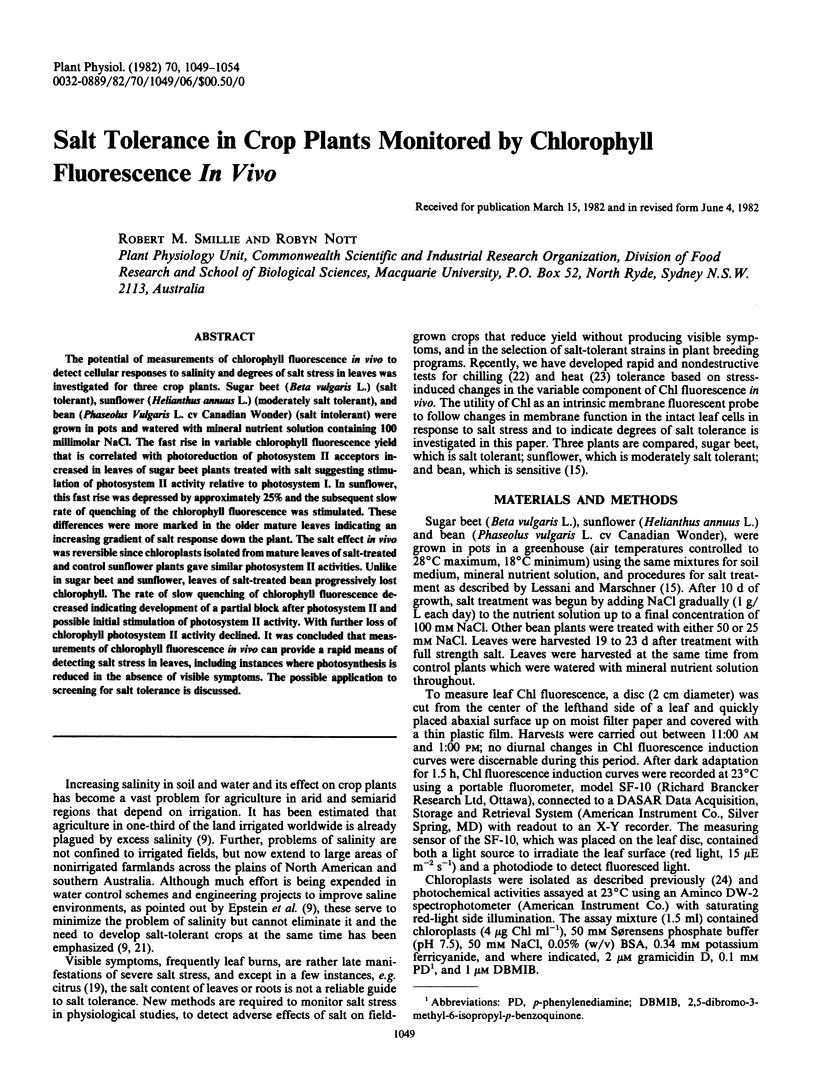
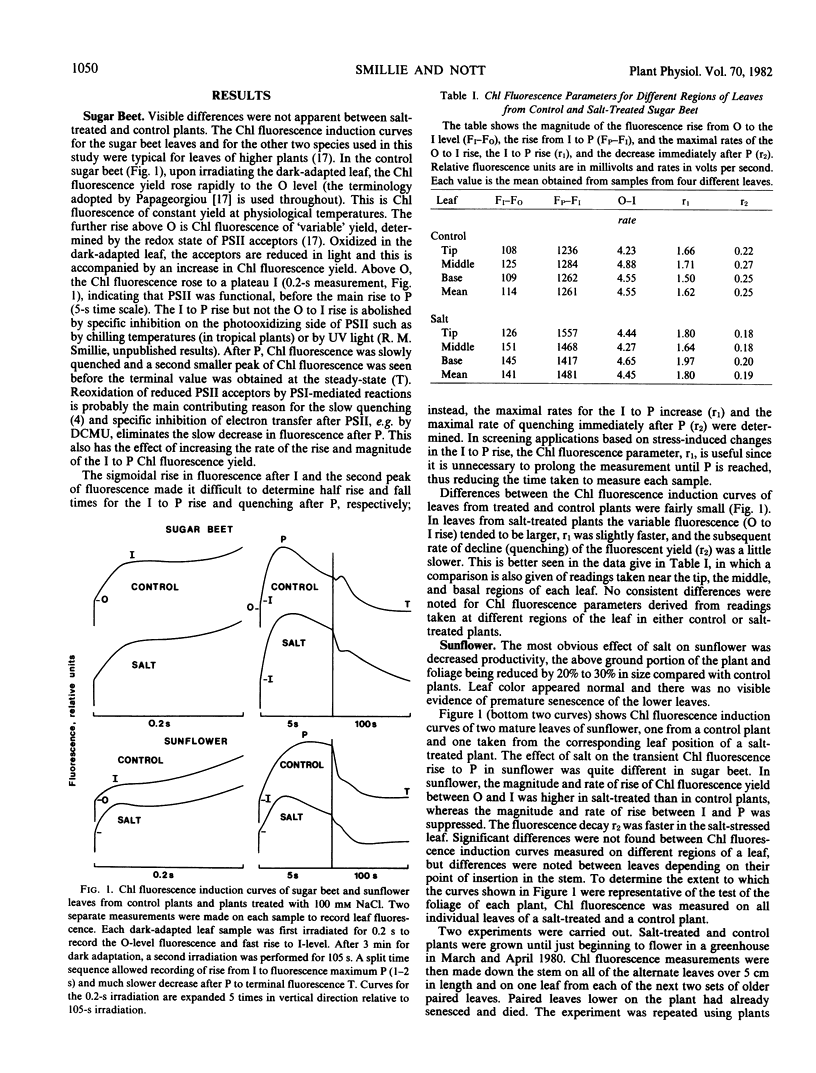
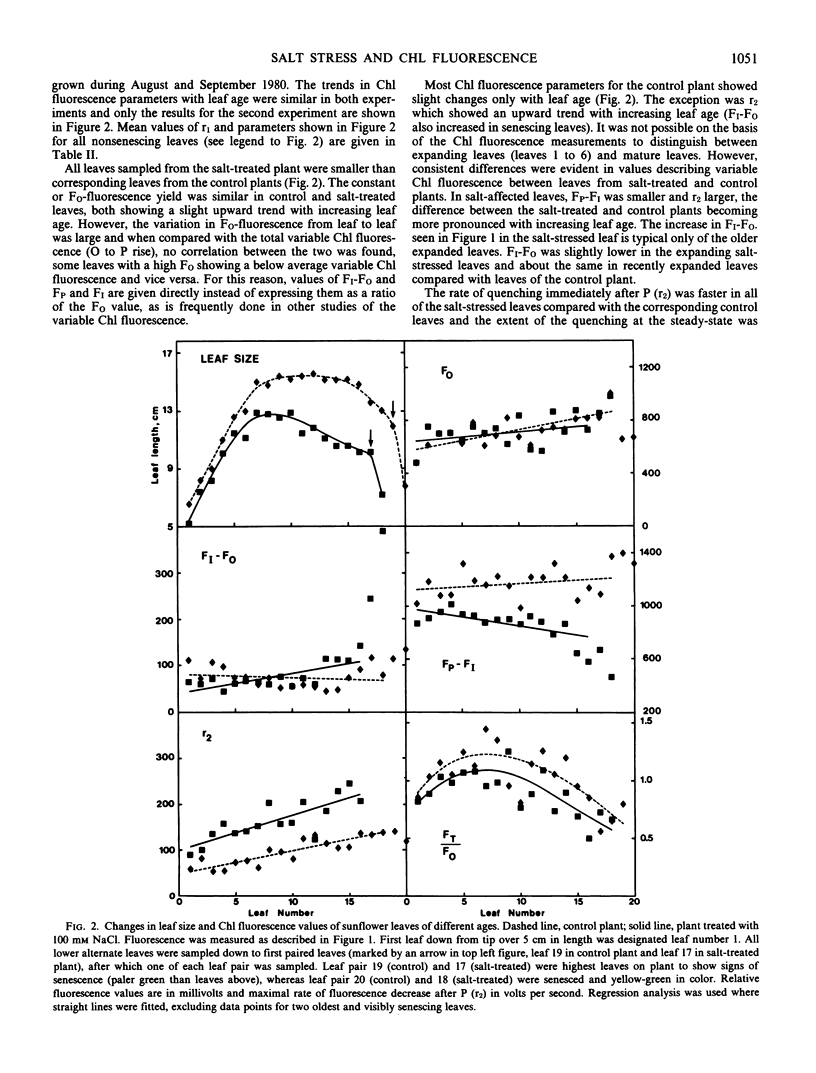
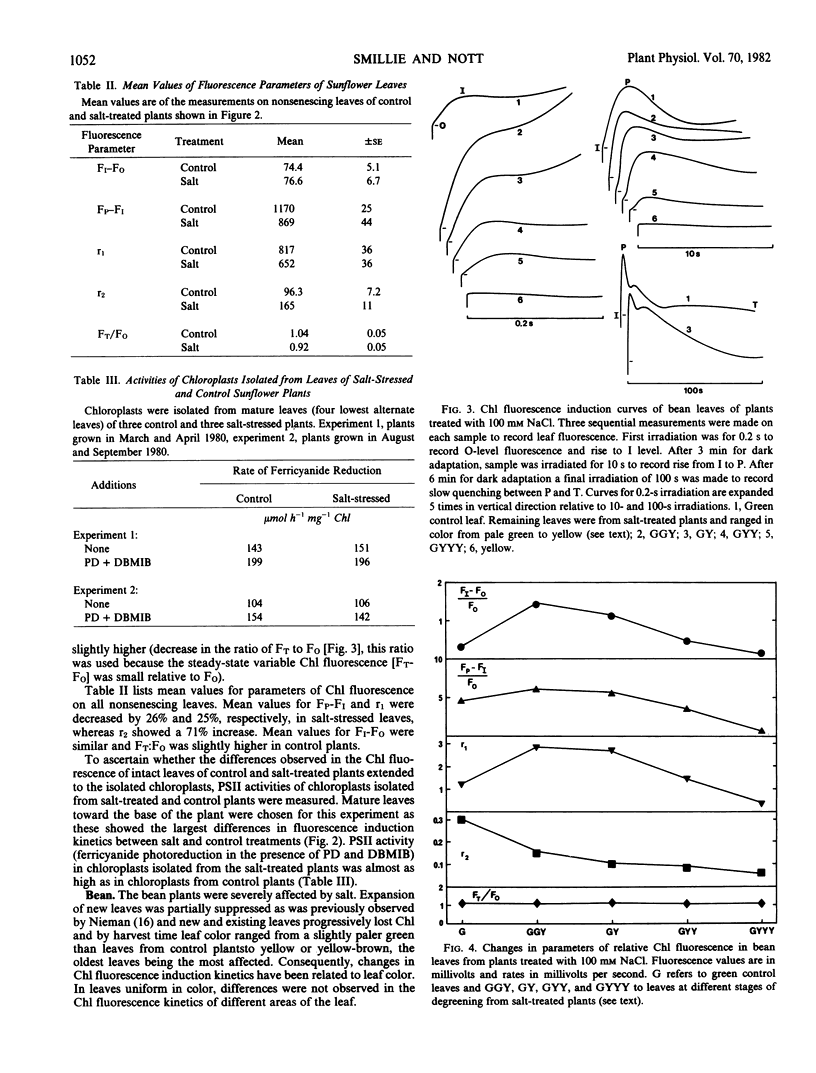
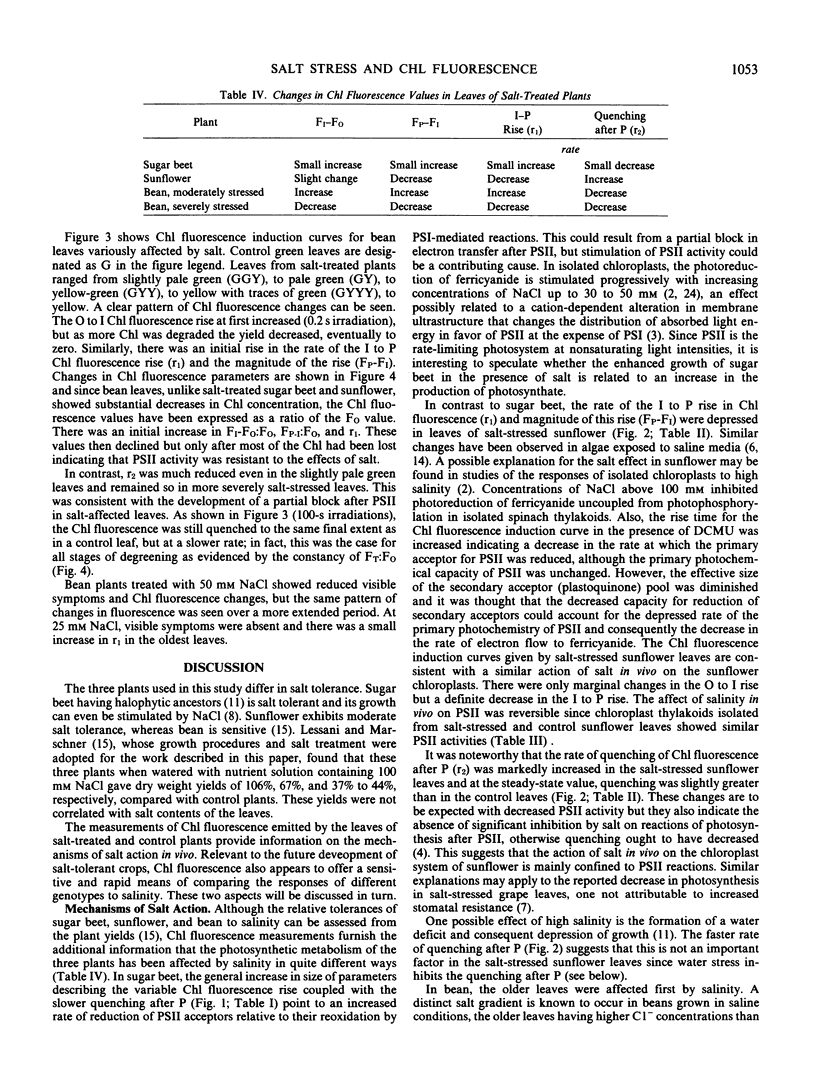
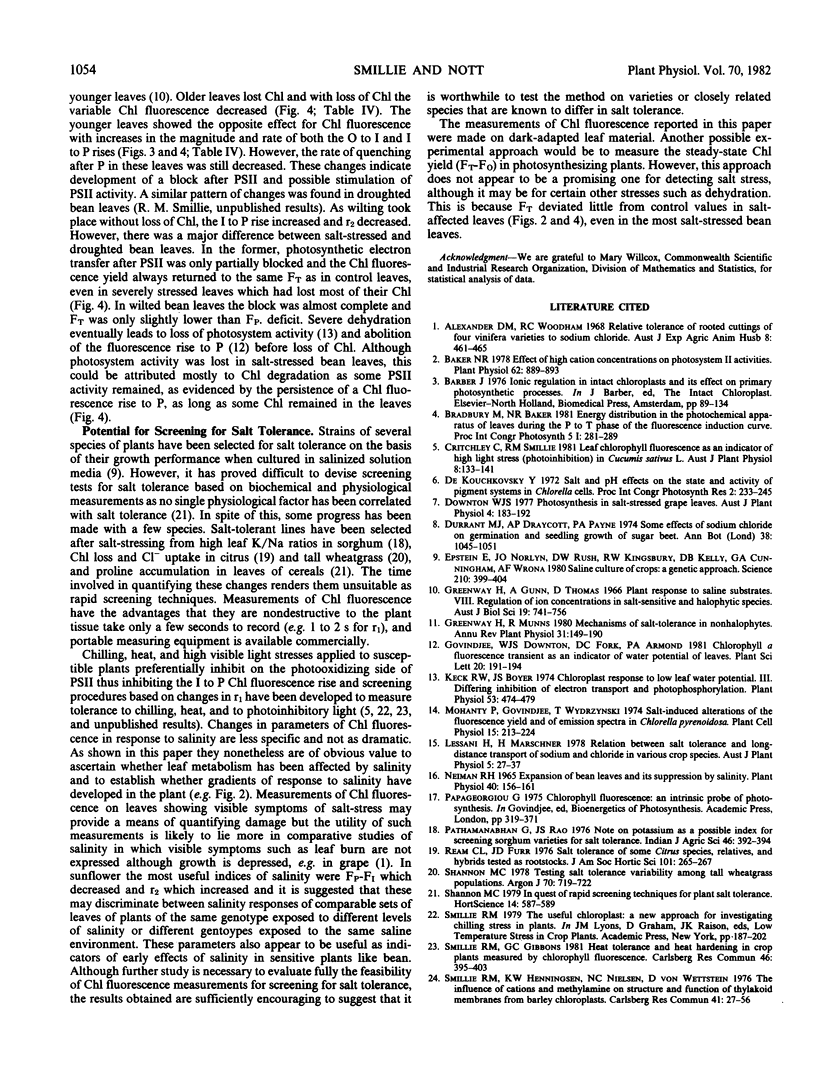
Selected References
These references are in PubMed. This may not be the complete list of references from this article.
- Baker N. R. Effect of High Cation Concentrations on Photosystem II Activities. Plant Physiol. 1978 Dec;62(6):889–893. doi: 10.1104/pp.62.6.889. [DOI] [PMC free article] [PubMed] [Google Scholar]
- Epstein E., Norlyn J. D., Rush D. W., Kingsbury R. W., Kelley D. B., Cunningham G. A., Wrona A. F. Saline culture of crops: a genetic approach. Science. 1980 Oct 24;210(4468):399–404. doi: 10.1126/science.210.4468.399. [DOI] [PubMed] [Google Scholar]
- Keck R. W., Boyer J. S. Chloroplast Response to Low Leaf Water Potentials: III. Differing Inhibition of Electron Transport and Photophosphorylation. Plant Physiol. 1974 Mar;53(3):474–479. doi: 10.1104/pp.53.3.474. [DOI] [PMC free article] [PubMed] [Google Scholar]
- Nieman R. H. Expansion of Bean Leaves and its Suppression by Salinity. Plant Physiol. 1965 Jan;40(1):156–161. doi: 10.1104/pp.40.1.156. [DOI] [PMC free article] [PubMed] [Google Scholar]


